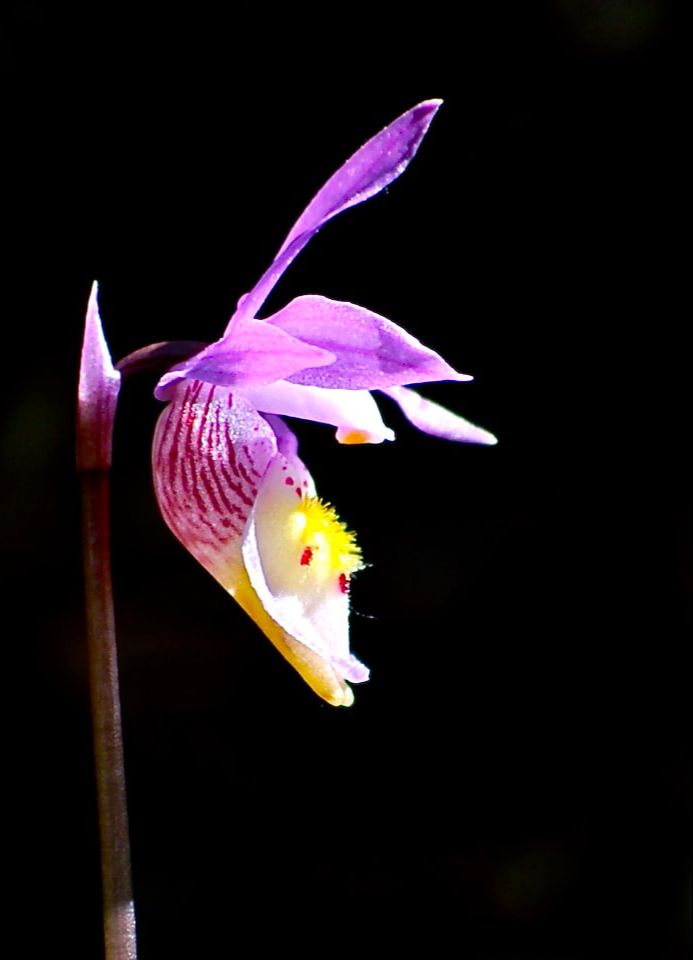|
Notes from the
Trail |
|
by Marlene Borneman The fossil record indicates that orchids may have coexisted with dinosaurs! The orchid family is the largest family of flowering plants in the world, approximately 30,000 species. So, it is only fair that approximately 26 species get to call Colorado home. Colorado’s native orchids are terrestrial orchids, referring to growing from the ground in soil. They range from a few inches to over a foot high. Since Rocky Mountain National Park is my backyard, I’m only going to tell the story of orchids that grow in the Park and the Front Range.
I also find how they grow mind-boggling! I will attempt to keep this simple, but remember native orchids are anything but simple! Orchid seeds are extremely minute and can number into the thousands in one single capsule. Because orchid seeds are so minute, they have no food reserves to germinate and are totally dependent on fungus for nutrients during the early stages of growth. Native orchids need a relationship with a variety of fungi to germinate and grow, for some orchids through maturity.
Blunt-leaf Orchid is uncommon in RMNP. It is another orchid I have only seen on the west side. 3”-9” high with one leaf at the base of the plant. The flowers are small and white-greenish in color.
A little trivia …What orchid has the most economic use today? The vanilla orchid. Of course, it does not grow in Colorado! However, some wild orchids found in the Rockies were once used as a food source or for medicinal purposes. For example, the bulbs (corm) of fairy slipper orchids were cooked by Native Americans for their rich buttery taste. The Paiutes made tea from the dried stems of coralroot orchids which was thought to build up the blood. Yes, believe it or not, there are folks out there who read flower guidebooks/websites and social media to locate native wild orchids to dig up in an attempt to transplant. For this reason, the location of orchids should never be made public. It is a rite of passage for anyone truly dedicated to observing and preserving native orchids to search habitats on their own and earn finding orchids. Only nature knows where to “plant” these orchids for success, so don’t even think of transplanting. Appreciate the orchids when you find them and let others enjoy their magical beauty, too. I just take a bazillion photos. My intention is not only to amplify your curiosity but also your respect for these vulnerable plants. Protect them. Suggested reading: The Orchid Thief by Susan Orlean Those Elusive Native Orchids of Colorado by Scott F. Smith
0 Comments
Leave a Reply. |
"The wild requires that we learn the terrain, nod to all the plants and animals and birds, ford the streams and cross the ridges, and tell a good story when we get back home." ~ Gary Snyder
Categories
All
“Hiking -I don’t like either the word or the thing. People ought to saunter in the mountains - not hike! Do you know the origin of the word ‘saunter?’ It’s a beautiful word. Away back in the Middle Ages people used to go on pilgrimages to the Holy Land, and when people in the villages through which they passed asked where they were going, they would reply, A la sainte terre,’ ‘To the Holy Land.’ And so they became known as sainte-terre-ers or saunterers. Now these mountains are our Holy Land, and we ought to saunter through them reverently, not ‘hike’ through them.” ~ John Muir |
© Copyright 2025 Barefoot Publications, All Rights Reserved














